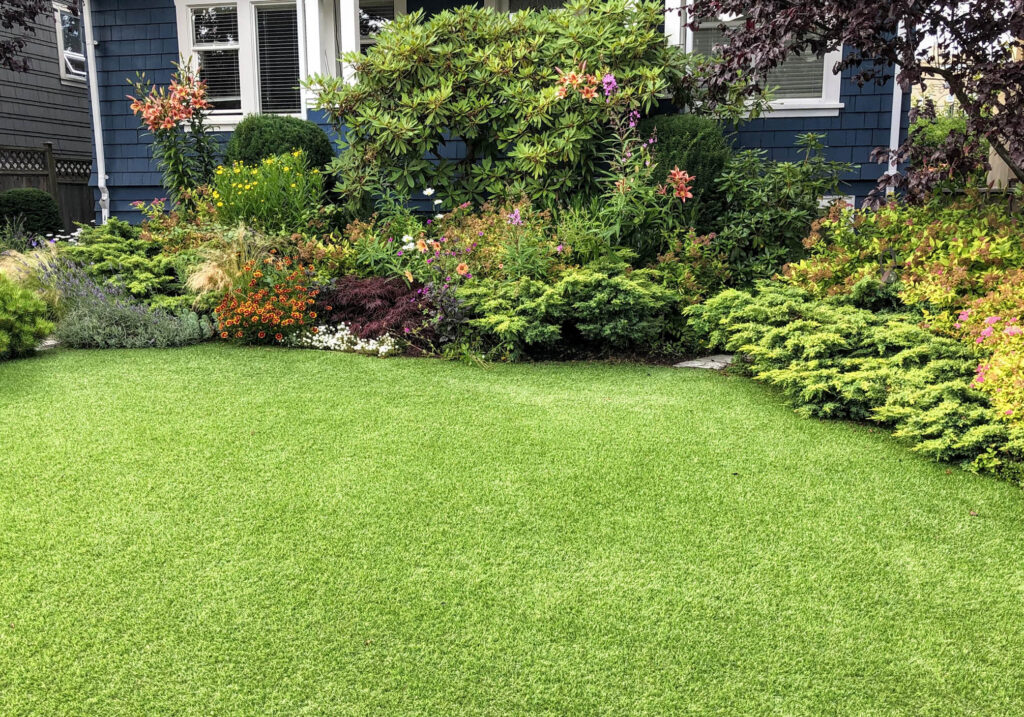When readying a listing to appeal to new homeowners, consider revamping a home’s landscaping to attract green buyers.
Water conservation is important to many people these days and trends show eco-friendly landscape designs are the go-to choice across the country.
With many cities and states in various stages of drought, and growing attitudes that value treading lightly on the planet, a sustainable refresh to a property’s exterior is a smart idea.
This article provides inspiration for an eco-friendly outdoors with many options you and the homeowner can create on a budget.
Opt for Native Plants
Plants native to the area are best for green landscapes because they are already acclimated to local rainfall and climate patterns. These options typically require little maintenance and are, therefore, easy and inexpensive for homeowners.
Additionally, native plants benefit local wildlife and are usually resistant to disease and pets that plague the area.

Practice Xeriscaping
Xeriscaping is a landscaping method that focuses on drought tolerance. The idea is that a homeowner can reduce the need for natural or artificial water by taking specific actions when planning a landscape design.
Placing plants with the same water requirements together is one form of xeriscaping.
As an example, you can create a succulent garden to avoid excess water usage. Consider that you would not want to mix tropical plants with cactuses if you’re practicing xeriscaping because tropicals require more water and you would over-irrigate your succulents.
Install a Sprinkler System with a Timer
It’s easy to over-water plants using a hose, so go the green route by installing a sprinkler system with a time. Set a schedule that provides the minimum water required for your plants. And ensure sprinklers don’t overspray onto non-vegetative walkways, patios, and driveways.
As an alternative to sprinkler systems, some homeowners install drip irrigation systems that save water by targeting plant roots instead of foliage. This is a great way to water garden beds and mature plants with deep root systems.
Get to Know Your Property
You can be water-wise by getting to know your property and its unique requirements and conditions. For instance, some areas may get strong winds that can dry soil or blow sprinklered water away from plants. These situations would cause the homeowner to have to water more.
Likewise, sunlight can have a positive or negative effect on landscaping. Reflecting on whether the home is in a cold or warm region, you should choose plants that will withstand the weather with minimal resource investment.

Lay Synthetic Grass
Artificial turf isn’t just for football fields and dog runs. It’s the focal point of many eco-friendly yards. Synthetic grass requires little water or maintenance, and it can be cheaper to lay and keep up than its living counterpart.
Kids, pets, and guests are often hard on natural grass. With a synthetic option, homeowners probably won’t have to worry much about heavy traffic wrecking their landscaping. As a bonus, many municipalities give rebates for artificial grass, which can eliminate the cost of installation.
Choose Ground Cover Over Grass
If synthetic doesn’t appeal to you or your seller, consider covering large areas of a front or backyard with ground cover. Moss and clover are attractive options for spaces where people will walk barefoot.
Sand is also easy on the eyes and toes, and ground coverings like wood chips and pebbles can provide visual appeal while remaining eco-friendly.
Harvest Rainwater
Harvesting rainwater is a simple way to reduce water usage from local utilities. But, keep in mind that many regions don’t allow rainwater harvesting.
For those that do, take advantage of this practice by capturing stormwater runoff from gutters and roofs, and using this free resource to water flowers, plants, and vegetable gardens.
Summary
These are just some of the eco-friendly landscaping ideas you can use to ready your next listing for green buyers. Homeowners may also want to use organic mulch around trees to conserve moisture and reduce water usage.
Depending on your local area, you can also advise homeowners to keep lawns ‘high and dry,’ cutting no more than a third of the length of the grass blades at a time (this is not a good idea for high-fire areas).
Want to learn more about sustainability and real estate? Read our article on eight facts agents should know about the green housing market.









